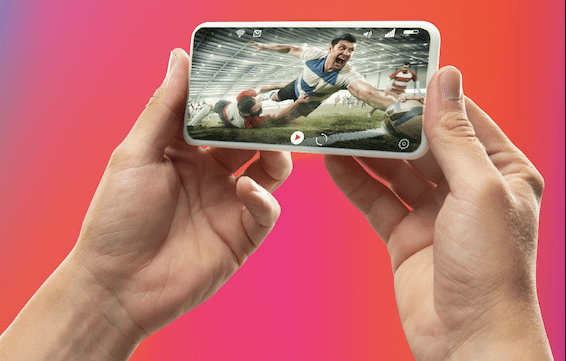Sports technology is everywhere. Fans use it to enhance their viewing experience, both inside and outside the venues and to engage with their favourite teams and players. Technology also assists teams and players with training, injury prevention and treatment, and performance management. Data generated by wearable technologies and digital cameras support decision-making during the game and also inform post-game reviews. Technology is also improving accessibility to sports at all levels for women and differently-abled players. In response to this growth in technology, Capgemini conducted a report to understand more about its transformative impact on players and fans.
Sports technology report: key takeaways
Technology and data analysis have transformed all aspects of the sports industry. The preference for consuming sports content over smartphones, streaming platforms, and via social media has increased significantly as technology has become more sophisticated. There are several ways in which fans are using technology, including to access scores, news, and insights, and to watch highlights. They are also interested in wearable devices, such as digital wristbands to enter the venue or pay for food, that will streamline the fan experience. Fans are also keen to try more advanced, immersive tech experiences, such as those offered by VR and the metaverse. Another area of interest is the purchasing of digital sports collectables in the form of non-fungible tokens (NFTs).
The tech-enabled experience has improved so significantly that younger fans are willing to enjoy games, especially local leagues, from the comfort of their couches. Fans at home can enjoy high-quality broadcasts with better camera angles, analysis and replays, detailed game statistics, and immersive and multi-platform experiences, all of which increase the pressure on venues to deliver a differentiated experience.
Technology is also transforming the player experience by providing new tools and systems to improve training and performance and manage injuries. Technology for players ranges from developments of established technology, such as GPS tracking devices, to cutting-edge immersive, simulated environments and smart clothing. Injury-prevention technology not only accelerates recovery but can also anticipate the risk of injury through AI-based insights into training methods and performance.
Technology is also the key to creating diverse, inclusive sports experiences. For example, fans can easily access all kinds of sports content, including parasports and women’s sports, via streaming platforms and social media. Data analytics, wearables, and other technologies can further close the gap between men’s and women’s sports.
The conversation around the environmental sustainability of sports has also intensified, with fans expecting players and other stakeholders to act on sustainability beyond the venue.
To further enhance the tech-enabled experience for fans, teams, and players, organizations should:
- digitize the end-to-end fan experience inside the venue, from pre-game to entry, game time, ordering food, and exiting, to provide an exciting and differentiated venue experience;
- increase fan engagement by using data to offer experiences and content tailored to individual fan preferences during the off-season;
- identify specific needs of players/teams in conjunction with coaches and the players themselves, before deploying technology;
- make objective, data-driven decisions, leading to more effective game strategies and an increased competitive edge.
From creating personalized fan experiences to shaping game strategy, improving training, and analyzing injury risk, technology is transforming the entire sports industry. The future of sports is digital.
Download the report on sports technology and its impact, here.
Want to better understand sports technology and its impact?
If you’re looking for advice from an agency versed in sports technology, Strive Sponsorship can help. Contact us for sponsorship, commercial, content, media, operations, investment, and communications consultancy services.
Frequently asked questions
What is sports technology?
Sports technology refers to the application of innovative solutions and advancements in technology to enhance athletes’ performance, training, and overall sports experience. It includes wearables, virtual reality, data analytics, and other tech-driven tools used in sports and fitness industries. It also refers to technologies that enhance the consumption of sports from a fan perspective, be that passive viewing or via active engagement.
What are the benefits of sports technology?
Sports technology offers benefits like improved performance tracking, injury prevention through data analysis, enhanced training efficiency, better fan engagement through virtual experiences, and more accurate officiating, leading to overall advancements in sports and athletes’ well-being.
How is technology impacting sport?
Technology is integrated into every element of sport, both from a participation and viewership point of view. Fans use it to enhance their experience both inside and outside of venues and to engage with their favourite teams and players. Sports technology also assists teams and players with training, injury prevention and treatment, and performance management.














